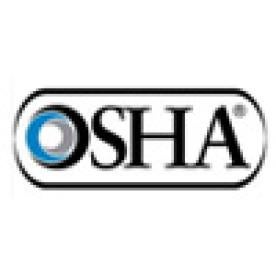The last quarter of 2015 was marked by an ever-increasing drumbeat of employee and union concern over what many viewed as the Occupational Safety and Health Administration’s (“OSHA’s”) anemic enforcement capability. The agency agreed―on October 7, 2015, the Assistant Secretary of Labor for OSHA, Dr. David Michaels, told a House subcommittee that the “most serious obstacle to effective OSHA enforcement of the law is the very low level of civil penalties allowed under our law, as well as weak criminal sanctions” and added that “OSHA penalties must be increased to provide a real disincentive for employers accepting injuries and worker deaths as a cost of doing business.” With the passage of the most recent federal budget, significant steps have been taken to address those concerns.
Background
OSHA has long been criticized for seeking meager financial penalties and for failing to bring criminal charges against employers in the wake of serious incidents, frequently involving casualties. This is particularly true in cases where both the U.S. Environmental Protection Agency (“EPA”) and OSHA inspect the same incidents and OSHA demands relatively small penalties and elects not to pursue criminal prosecution, while EPA demands considerable financial penalties and brings criminal charges. A prime example is the tragic incident at BP’s Texas City refinery in March 2005, in which 15 employees were killed and 180 employees were seriously injured. OSHA and EPA investigated the incident. OSHA sought less than half the financial penalty demanded by EPA, and EPA brought criminal charges.
New DOJ and DOL Partnership
The federal budget signed into law on November 2, 2015, permits OHSA fines to be raised by 80 percent. This upward adjustment in fines will commence by August 2016.
Unsatisfied with simply increasing fines, on December 17, 2015, the U.S. Department of Justice (“DOJ”) announced a partnership with the Environmental Crimes Section (“ECS”) of DOJ and the U.S. Department of Labor (“DOL”) to criminalize worker safety violations. DOJ and DOL inked a Memorandum of Understanding (“MOU”) encouraging federal prosecutors to work with ECS to pursue worker safety violations under the Occupational Safety and Health Act (“OSH Act”), the Mine Safety and Health Act, and the Migrant and Seasonal Agricultural Worker Protection Act as environmental crimes. This move comes on the heels of a September 2015 memorandum from DOJ’s Deputy Attorney General Sally Quillian Yates (the so-called “Yates Memorandum”) that was delivered to all 93 U.S. Attorneys in which DOJ adopted new initiatives to strengthen its pursuit of all manner of individual corporate wrongdoing.
DOJ has previously sought to rely upon environmental statutes to enforce workplace violations but has never taken an action this extreme. DOJ took this action for two reasons. First, environmental offenses often occur in conjunction with worker safety violations. Second, criminal violations of environmental statutes can be charged as felonies, while violations of the OSH Act are mere misdemeanors.
Using Environmental Statutes to Up the Ante
Using Title 18 of the U.S. Code (the federal penal code), prosecutors can demand larger fines and prison sentences for worker safety violations and effectively increase deterrence. The DOJ announcement pointed out that the Environment and Natural Resources Division (“ENRD”) of DOJ had already been engaged in strengthening its efforts to pursue civil cases that involve worker safety under environmental statutes. This development is the next logical step. Among the internal changes to DOJ’s investigation practices are these two requirements: (1) civil division attorneys must share information with criminal division attorneys, and (2) criminal division attorneys must explain to a supervisor why they did not seek charges against an individual company wrongdoer.
In discussing the MOU, Ms. Yates remarked that “the announcement demonstrates a renewed commitment by both DOJ and DOL to utilize criminal prosecutions as an enforcement tool to protect the health and safety of workers.”
For its part, the DOL is committing to robust information sharing with the ENRD, including making its investigative files available to DOJ for case development.
Both DOJ and DOL agreed to develop and conduct periodic training programs to ensure the validity of referrals and to increase the frequency of criminal prosecutions.
By working in concert, the goal of both agencies is to increase the effectiveness of criminal prosecutions of worker safety violations.
Today’s OSHA can be described as anything but anemic. OSHA, during the Obama administration, has dramatically expanded the industries and hazards that it targets for enforcement. As a result of the new federal budget and MOU, OSHA is on the verge of dramatically increasing fines associated with alleged OSH Act violations and is poised to prosecute workplace violations as felonies.
What Employers Should Do Now
-
Reevaluate safety and health programs and aggressively correct any issues and inadequacies that are identified.
-
Develop and strengthen employee training programs aimed at every hazard associated with employees’ jobs in order to significantly decrease the threat of prosecution.
-
Consider conferring with counsel to conduct an attorney-client privileged safety and health audit of your workplaces. Otherwise, OSHA could request your audit report during an inspection and use it as a map to potential hazards at the facility.
Taking these proactive steps could not only improve the health and safety of your workplace but also prevent your business from facing millions of dollars in OSHA fines under environmental statutes and a finding of criminal responsibility with prison time for individual executives and employees.



 i
i


